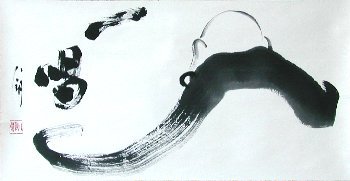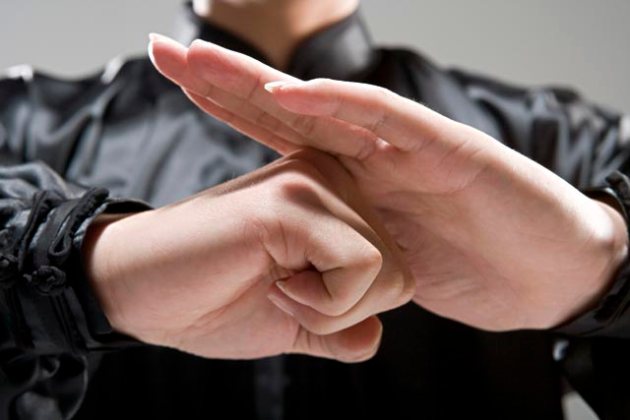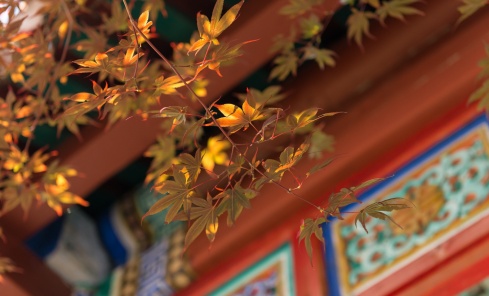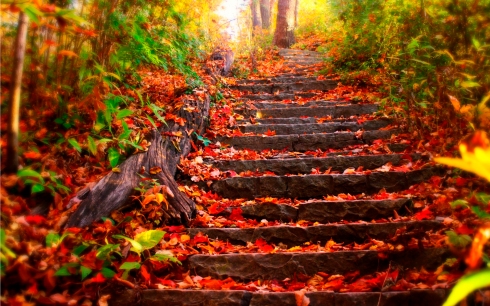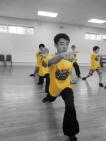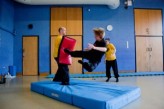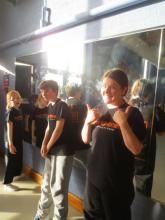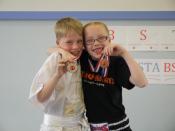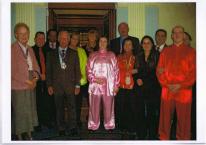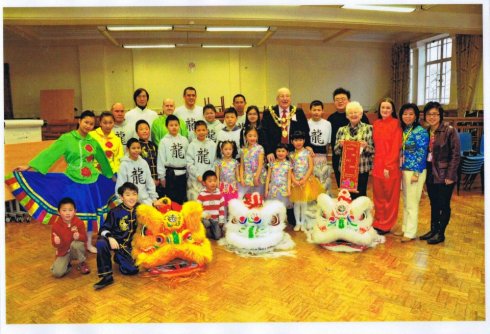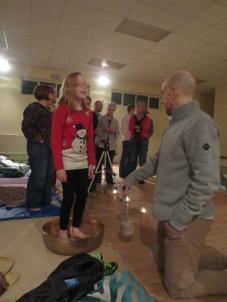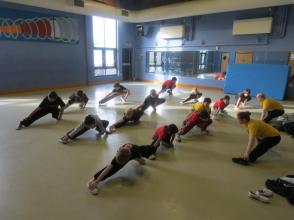“To keep the body in good health is a duty… otherwise we shall not be able to keep our mind strong and clear.” ~Buddha

The Chinese have a tradition of adapting to seasonal changes and following certain universal natural laws of nature to help them to stay healthy and strong.
I have to admit that when I regularly visit China and see the older generation, they are much more vital and active than our western counterparts. Every morning they are up early in the parks taking various different exercises, moving their bodies, staying active and socializing. They are educated in self-care and are aware of their environment and how they are and can work in harmony with it to prevent illness.
They are taught from a young age about health prevention. Knowing what foods to eat to balance their bodies, how to adjust to climatic changes and what exercises are beneficial. And in general they have a deeper awareness of nature and their place within it. They follow the laws of yin and yang and five elements and therefore try to balance themselves before sickness or illness can take hold. I think we have a lot to learn from these older generations and we could prevent a lot of illnesses occurring by just taking responsibility for ourselves, and our lifestyles.

Before I talk about the health tips for winter I want to explain a little about The Chinese Five Element understanding of this season and its associated organs.According to The Chinese Five Element system, Winter is ruled by the water element, which is associated with the kidneys, bladder, and adrenal glands.According to the philosophy of traditional Chinese medicine, the kidneys are considered the source of all energy (Qi) within the body.They store all of the reserve Qi in the body so that it can be used in times of stress and change, or to heal, prevent illness, and age gracefully.The kidneys control the life force energy; our vitality and longevity are said to be stored in our kidneys. Therefore over the winter period there are various methods to help us to restore and protect our kidneys and kidney energy.
During these winter months it is important to nurture and nourish our kidney Qi. It is the time where this energy can be most easily depleted. Our bodies are instinctively expressing the fundamental principles of winter which are rest, reflection, conservation, and storage.Winter is a time of deep stillness and conservation. It is the most inward time of year, the time of ultimate yin, where nature is resting, hibernating in preparation for the spring.
“Sit quietly, doing nothing, spring comes, and the grass grows by itself.”–Zen saying
You may find that at this time of year you are deeper within yourself seeking rest, replenishment, reflecting and listening, being more aware of your senses. It is considered a time to get plenty of rest, good nutrition, relaxation and sleep.

Winter Diet
As we move into winter we need to adjust our diets once again. Winter diet should be warming and substantial, with more whole grains, less fruit, lots of steamed and baked vegetables. Soups are wonderful for this time of year and also ocean foods like fresh fish and seaweeds.
Because the weather is colder and days shorter we tend to have less physical activity therefore burning fewer calories in comparison with the summer. Therefore is it suggested we don’t increase our food intake too much or you may gain extra pounds over this period. A diet which is mainly carbohydrates and proteins will give you the heat you need and a few extra pounds ready to burn off when the spring time comes.
Seasonally, fruits are less available unless you live in a tropical climate. Vegetables can be eaten daily, it is recommended steamed or baked. Vegetable soups are recommended on cold days as they are nutritious warming and easy to digest. Garlic, ginger and cayenne pepper can also add a bit of warmth to your meals and warm up those long dark nights.
Cooked whole grains are an excellent staple in the winter. Complex carbohydrates like millet and buckwheat are great body heaters and are less starchy than other grains. If you combine these with beans like mung beans or red beans you can make complete proteins. Adzuki red beans are good for kidneys and black beans assist with sexual function.For meat eaters I would suggest fish, deep sea fishes from non polluted areas, some chicken or small bits of red meat is ok as long as you know it has not been fed loads of chemicals and hormones to plump up their muscles. If you listen deeply to your body, it will tell you what is right for you to consume. Here are a few healing properties of certain foods.
Adzuki beans – remove damp and ease swelling
Celery – calms the liver and treats high blood pressure
Chestnut – strengthens kidneys, lower back and knees
Fennel – eases flatulence and removes clotting during menstruation
Kidney – strengthens kidneys and helps with lower back pain and sexual problems
Leek – warms the body and counteracts diarrhoea
Liver – nourishes blood and treats Liver deficiency
Mung beans – cools summer heat and reduces fever
Pine nuts – builds the yin of the heart and lungs
Radish – cools heat from the digestive system
Sesame seeds – moisten the intestines and treats arthritis
Spinach – acts as a sedative and eases burping and acid reflux
Christmas Tipple
Winter is a time that many people like to enjoy an alcoholic beverage. Depending on our constitution this is not necessarily a bad thing as long as it is done in moderation. Wine is pungent and bitter and sweet and enlivens the spleen, warms the digestive system, expels wind and cold, promotes circulation of qi and blood, improves appetite and dispels fatigue. It is dry and warm or hot and can be used to dispel dampness and cold. Its yang nature enables these positive effects to reach everywhere in the body including the head, skin, and extremities. It’s particularly useful when the weather is windy, cold, raining and damp.Alcohol is also poisonous – so only drink amounts your particular body is comfortable with. Drinking too much will impair the mind, blood, stomach and increase production of phlegm-fire. The legendary Ming Dynasty (1368-1644) physician and herbalist, Li Shi-zhen wrote:
‘Wine, a beauty bestowed by heaven – drinking a small amount harmonizes the blood and moves the qi, strengthens the spirit and wards off cold, disperses worry and dispels moodiness. Drinking an extreme amount damages the spirit and consumes the blood, causes detriment to the stomach and death to the essence, engenders phlegm and stirs fire… Addiction to wine and getting drunk on a regular basis leads to disease and decay at best and to humiliation of one’s nation, ruination of one’s family, and loss of one’s life at worst’
Exercise
You need to take care during these winter months it is a busy time with the Christmas holidays but you must be careful not to run your batteries down. Plenty of sleep and relaxation will help you to recharge. Although this is a time for less physical activity it is very important to exercise still.Move every joint every day!!! This will keep you young and vital. Practices like Tai Chi, Yoga and Qi Gong are beneficial during this time, make sure you warm up extra to avoid injuries from cold and damp. Do not sweat too much during this seasonWinter is a great time to do indoor exercises.

Stay warm, avoid the cold, and keep the skin covered. The ancient Chinese believe that pathogens like cold and damp can invade the body, of which there are certain key areas; these are at the nape of the neck, ankles and wrists, lower back and tummy therefore it is advisable to keep these areas covered and warm when you go outside in the cold.
Here are some extra tips for general health preservation ENJOY X may you have a happy, peaceful and restful Christmas break xxx lots of love Martine xxx
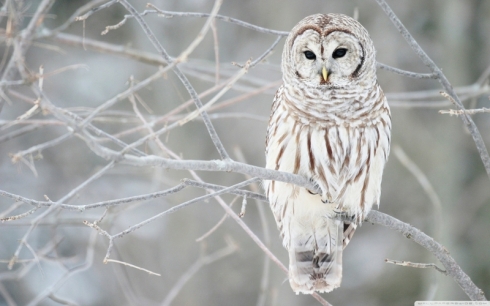
Tip 1: Protect your feet. Wash them with hot water before sleep and keep them warm and wrapped up.
“Keeping the feet warm through winter is essential in order to nourish Kidney qi”
In Chinese medicine feet are regarded as “the second heart” of the body. On your feet are many reflections of your internal organs and the tissues of the body. So massaging them regularly is a must. It will improve circulation of both your qi (energy) and your blood. Before you go to bed soak your feet in a bowl of hot water and then massage them. This will have the additional benefit of helping you sleep better. Feet must also be kept warm, especially in winter, as according to Traditional Chinese Medicine, they are related to the kidneys. Our kidneys are believed to be the source of yin and yang for the whole body, which keeps our bodies in balance.
Tip 2: Change your sleeping pattern with the seasons
“Early to bed and early to rise makes a man healthy, wealthy and wise”.
In traditional Chinese Medicine there are a set of rules governing the timing of going to bed and getting up based on the relationship between nature and humans. In Winter we need to go to bed early and to rise late. If we rise before the sun, we have to cope with the cold when we are least prepared to do so, having just got out of a warm bed, which will lead to “cold diseases” and drains our energy reserves.

Tip 3: Go for a walk after dinner
A Chinese proverb says: “if you wish to live to the age of 99, please walk 100 steps after each meal”.
Walking has been a good way of keeping healthy since ancient times. One way is because walking helps improve bowel movement. This in turn shortens the time it takes for food to enter the small intestine, promotes digestion and absorption of food, and prevents stomach and intestinal disorders. Walking is beneficial to all age groups but especially for middle-aged and elderly people, as it is a relaxing form of exercise. Also in TCM theory we need oxygen to combine with food to make a special type of energy called Wei Qi, this is the qi that protects our body from pathogens and external climatic factors. So therefore by walking after dinner helps to generate Wei Qi more efficiently.
Suggestion: Walk daily, and when you get the chance, go to an area of great natural beauty and breathe in the fresh air. This has the added benefit of aiding the whole body especially the muscles, joints, heart, and respiratory and nervous systems.

Tip 4: Give your head an early morning massage to
brighten your day and face
After getting out of bed, rub and pull your ears gently with both hands. Then rub your scalp and comb your hair with your fingers. After this rub your two hands together until they are warm. Lastly wipe your face with warm hands (like when you wash your face), in an up and down motion for 10-20 times. This massage stimulates the circulation of qi and blood in the face. This will brighten your face, keep hair from greying and prevent diseases.

Tip 5: Keep your emotions in balance
According to TCM there are 7 emotions: joy, anger, pensiveness, worry, sadness, fear and fright. TCM states that joy is related to the heart, anger is related to the liver, pensiveness comes from the spleen, worry impairs the spleen and the lungs, sadness harms the lungs and fear and fright both affect the kidneys.
If we allow our emotions to constantly run away with us, illness and
disease may follow; we all know what it is like to get over excited during the day and find ourselves unable to sleep at night. So try to not allow yourself to let your emotions go into over-drive.
Suggestion: When your emotions overwhelm you, remember to breathe deeply to exert a calming influence over your body and emotions.
Tip 6: Sex
In the winter, everything on earth goes into hiding. In compliance with this hiding, we should avoid depleting the spirit with emotionless sexual activity. In general TCM states that temperance in sexual activities is also important. Overindulgence damages health and shortens life span. It is best to avoid sex when:
- You are very hungry or too full.
- It is very cold or very hot.
- Emotions are in excess or out of control
- You are ill, or feeling frail or deficient.
- Body or mind are exhausted.
- You’ve had too much alcohol to drink. (this one is very important!!)
TIP 7: Proper Balance Between Work and Rest
Do not think that by taking a rest you are lazy!! Rest is an essential part of healing and restoration. It is really healthy to have a nap for about 10 minutes during the day.

Naps can be one of the most powerful tools for self-improvement; they can increase not only our health and wellbeing but our intelligence and productivity as well. This is something great men have known all along. History is full of famous nappers!; Famous thinkers and leaders like Edison, JFK, Churchill, and Napoleon were all ardent nappers!
Benefits for napping:
- Increases alertness
- Heightens your senses and creativity
- Prevents burn out
- Improves your mood
- Benefits your health……. how? Well…… When you sleep, you release growth hormone, the antidote to cortisol which boosts your immune system, primes your sexual function, reduces stress and anxiety, and aids in muscle repair and weight loss. Napping gives your brain a chance to rest and your body a chance to heal.
Proper rest can relieve the weariness of the body and mind and restore physical strength and mental power.Avoid physical strain through protracted exertion, over-exertion, or exertion when hungry or full. Also avoid mental overexertion; as soon as concentration becomes difficult during reading or writing, it is high time to take a rest.
Sources:
Staying Healthy with the seasons By Elson M Hans MD
The Yellow Emperors Classis of Chinese Medicine By Maoshinh Ni
Between Heavan and Earth by Harriet Beinfeild and Efrem Korngold
http://straightbamboo.com/how-to-stay-healthy-in-winter/ By Alex Tan







